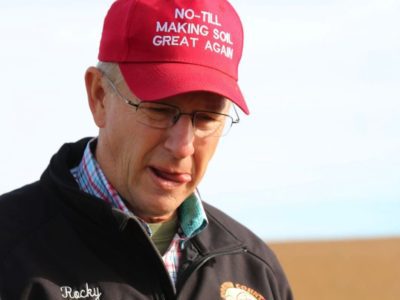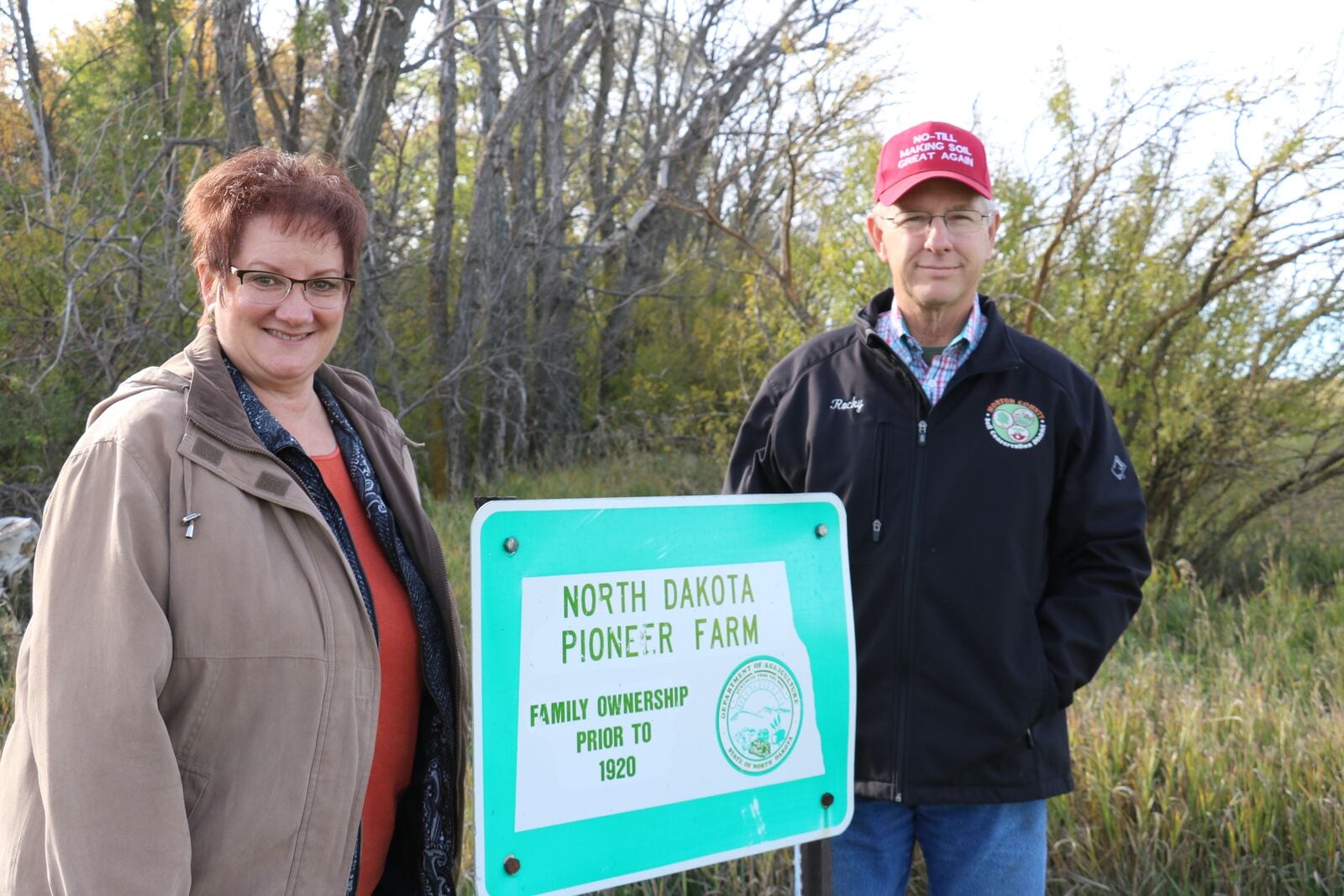North Dakota farmer Rocklin (Rocky) Bateman was at a crossroads. After farming conventionally for years, financial challenges in the 1990s put him and his family in the unenviable position of needing to change how they farmed or to get out of the business.
The Batemans chose the former.
Tucked in the rolling sand hills near New Salem, North Dakota, Bateman farms land that has been under continuous family ownership for 120 years. Some of the ground he currently farms was homesteaded by his great grandfather, and another parcel was settled by his great-great grandfather.
“When my family immigrated to central Morton County from Germany, all the really good land had already been homesteaded, and only the marginal Heart River hills were left,” Bateman says. “We were conventional farming, but on these marginal soils, erosion had eliminated the very shallow topsoil, and our organic matter was gone. Nothing would grow anymore, and we didn’t know why.”
Time for a Change
 Bateman started farming right after high school in 1973. He and his family made farming work for about two decades before they were forced to confront a harsh economic reality. What they were doing wasn’t working. Rather than leave farming, Bateman began to focus on soil health. As a result, 20 years ago, he committed to no-till farming.
Bateman started farming right after high school in 1973. He and his family made farming work for about two decades before they were forced to confront a harsh economic reality. What they were doing wasn’t working. Rather than leave farming, Bateman began to focus on soil health. As a result, 20 years ago, he committed to no-till farming.
“We didn’t just do a few acres; it was all or nothing,” Bateman admits. “It was the best decision I ever made.”
Bateman connected with researchers and local experts who were knowledgeable about no-till farming through his adult farm-management group. He toured farms in western North Dakota where pioneering farmers were practicing no-till.
“That put me on the path to meet the right people and ask the right questions,” Bateman says.
In addition to no-till, Bateman’s approach includes a dynamic mix of cover crops. The goal is to mimic the native prairie which is a combination of warm- and cool-season grasses and broadleaf plants. A decades-old analysis showed that the prairie was once home to over 120 species of plants that were growing in community. Bateman uses a wide range of plants, including soybeans, peas, oats, spring wheat, durum, canola, alfalfa and cover crops, to help speed up biological time and to restore the land to a more productive state.
“Our goal with cover crops is to get 10 or more species in the ground. That has a multiplying effect by adding diversity of root systems,” Bateman says. “We are trying to speed up our soil’s recovery time.”
Rather than simply rotating crops, Bateman rotates the root systems that will best restore the soil based on needs, including economics and disease pressures.
Bateman implements the five pillars of soil health: soil armor (crop residue), minimizing soil disturbance, plant diversity, continual live plants and roots, and livestock integration. Bateman’s daughter and son-in-law raise cattle that graze on crop residues and cover crops. He also uses cattle manure from the corrals to help improve the soil quality for particularly troublesome spots.
Building Productivity
Soil tests on Bateman’s land in the early 1990s showed less than 1 percent organic matter. Now, he has fields that have tested as high as 5.2 percent organic matter. Because that carbon is what Bateman calls “gas in the tank of the soil biology,” his productivity has climbed along with the increased organic material and is comparable to the best nearby soils.
“The system is giving back,” Bateman says. “In 20 years, I’ve tripled my corn and wheat yields. Soybeans are relatively new, but we’re on an upward trend for yield there, too. That’s exciting. It proves the system works.”
Farming in a semi-arid region, rainfall can be at a premium. The area’s average annual rainfall is less than 14 inches. Bateman’s no-till system only disturbs about 4 to 5 percent of the soil when planting. The rest of the time, he leaves the soil alone and lets the root systems do their work.
“I used to think rainfall was the limiting factor,” Bateman says. “Water wasn’t the issue; my tillage was. Once I converted, the soil took off.”
Sustainability
Bateman says that he spent half of his farming career doing things wrong. Switching to no-till, incorporating cover crops and focusing on soil health were game changers for him.
“Soil health drives everything,” Bateman contends. “Instead of fighting it, we’re working hand-in-hand with the soil.”
Not only has his approach increased yields and restored soil health, there are other practical benefits. Bateman says that increased organic matter and soil health have reduced the need to add commercial fertilizer. Fuel use has shrunk from about 6 or 7 gallons per acre to 2 gallons per acre. Equipment repairs, tractor hours and human work hours have also been reduced, which all add to the farm’s bottom line.
“We enhance our sustainability by mimicking nature. This is a long-term process that we will be working on for generations,” Bateman says. “We are looking to stop soil erosion, nutrient loss and improve water quality. In my opinion, a true no-till system gives you all of this for free.”
Bateman is now working to restore the soil bacterial and fungal ratios. Having the proper balance could mean that the soil will be in a better position to naturally fight disease and even weed pressure.
Bateman is sharing what he’s learned and his passion for soil health. In addition to farming, Bateman is a director for the Morton County Soil Conservation District, is a state director for the North Dakota Association of Soil Conservation Districts and works with the USDA-Agricultural Research Service’s Northern Great Plains Research Station in Mandan.
Failure is not an option. Bateman’s goal is to pass the farm he’s been working for 20 years to restore on to the next generation.
“I am going to continue building and restoring my soil’s health so that I can reduce or eliminate my dependence on commercial inputs,” Bateman says. “I believe it is my best interest to let the soil give me what we need for free rather than spending money on it.”

